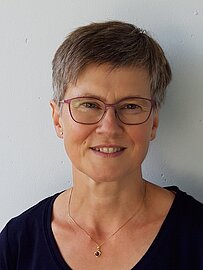Research
The individual research fields all derive from the question of how we can make technological progress available to users (especially of embedded systems) as quickly and easily as possible. On the one hand, this can mean making the constantly growing chip capacities usable at the most abstract level possible. On the other hand, it means making new technologies usable by developing adapted circuit techniques and tools for "Electronic Design Automation".
Essential technological tools for our work are FPGAs, or more generally reconfigurable devices.
Research topics
FPGA-based System-on-Chip design systems
FPGAs have become continuously cheaper over the last years and have now reached a price level that allows to use these devices quite regularly for the implementation of Systems-on-Chip (SoC). For this purpose we have developed our own SoC kit SpartanMC. In it, the GCC plays a crucial role for translating the firmware. We also use the GCC with our own PIRANHA plugin for automated generation of HW accelerators using high-level synthesis.
Microarchitectures for adaptive processors
As part of our AMIDAR activities, we are researching novel microarchitectures that support runtime adaptation particularly well. Computationally intensive portions of applications are thereby mapped to Coarse Grained Reconfigurable Arrays. The same effect can also be used to accelerate conventional processors. We investigate this using the RISC-V architecture as an example.
Use of new technologies
The use of new materials allows the fabrication of memristors, which until the 2000s were really only postulated as a theoretical model. In the meantime, devices with memristive behavior can be manufactured in various ways. Of particular interest is the fact that these devices can be applied to normal silicon chips in a 3D structure. As the name implies, memristors can be used to store bits or even analog quantities.
We are investigating how to use these elements in processors, FPGAs, and other computational structures to operate faster, cheaper, and more energy-efficiently.
Synthetic Biology
By selectively modifying the DNA of cells and microorganisms, it has become possible to have them produce targeted proteins. If several such processes are cleverly linked, it is possible to realize Boolean functions. The mapping of a desired logical function to basic elements of such a realization poses completely different requirements for such technology mapping than for basic electrical circuits. We design technology mapping tools for synthetic biology that determine optimal implementations of Boolean functions. Therefore, we are also a member of the Centre for Synthetic Biology at the TU Darmstadt.



